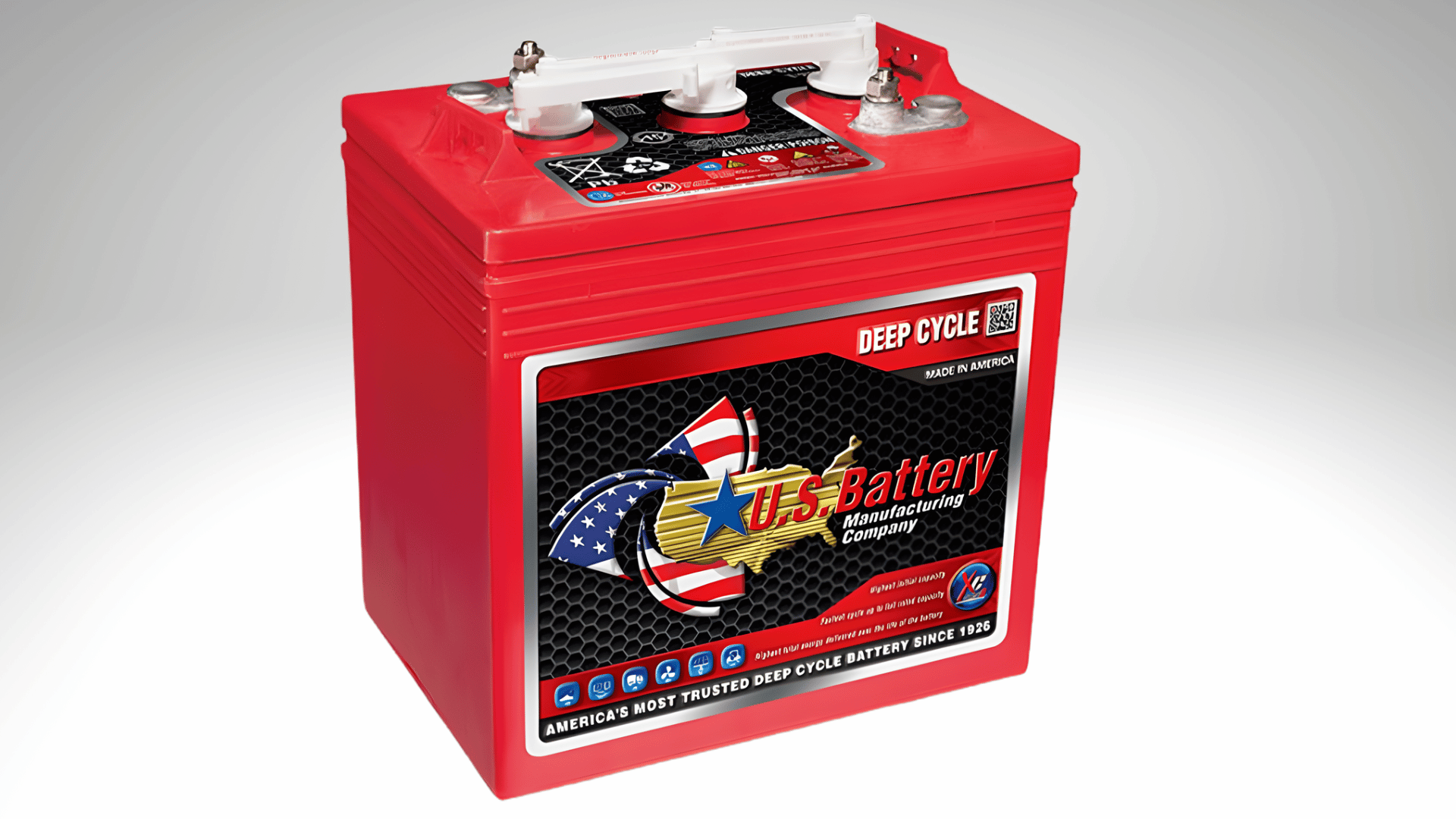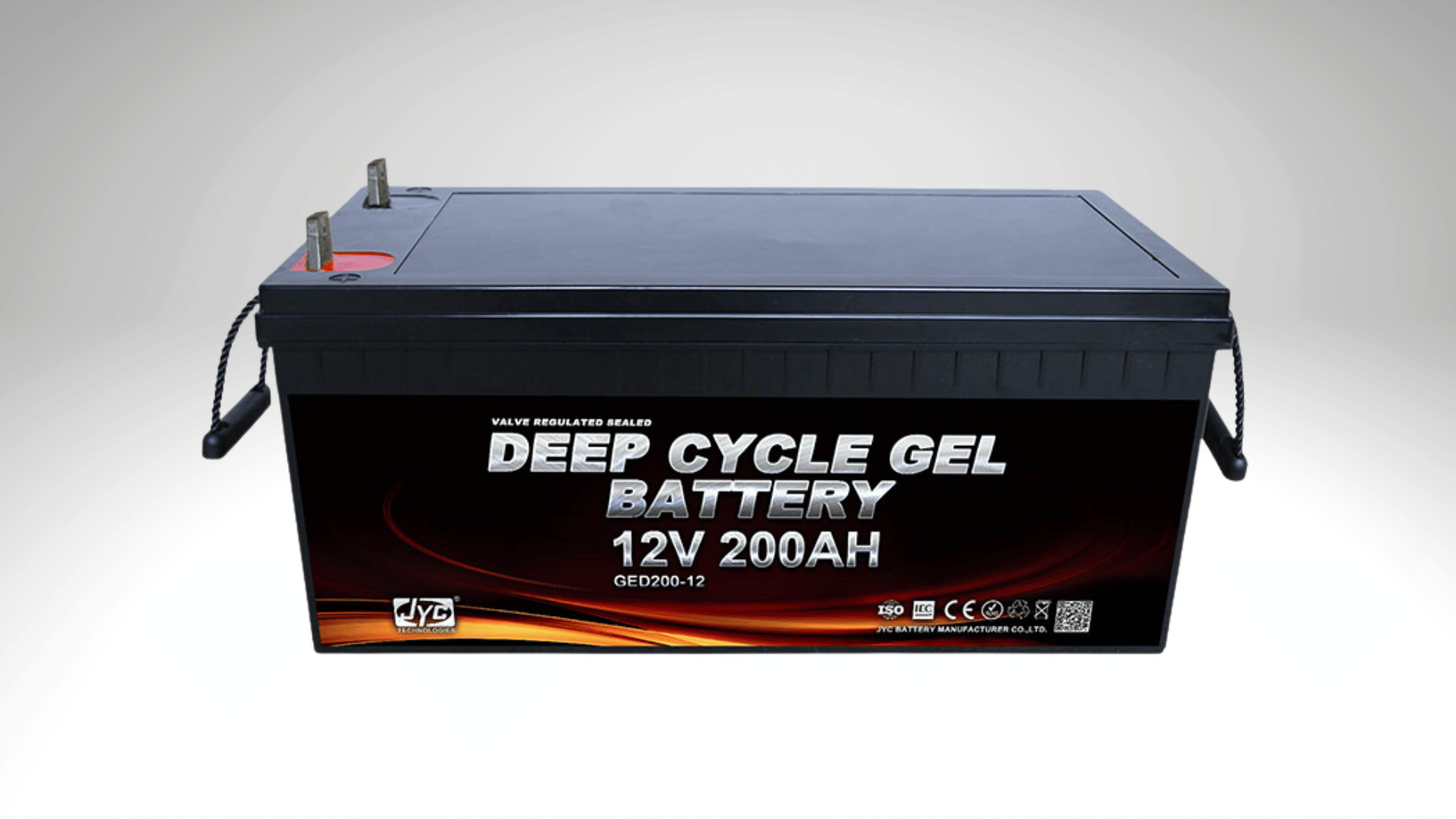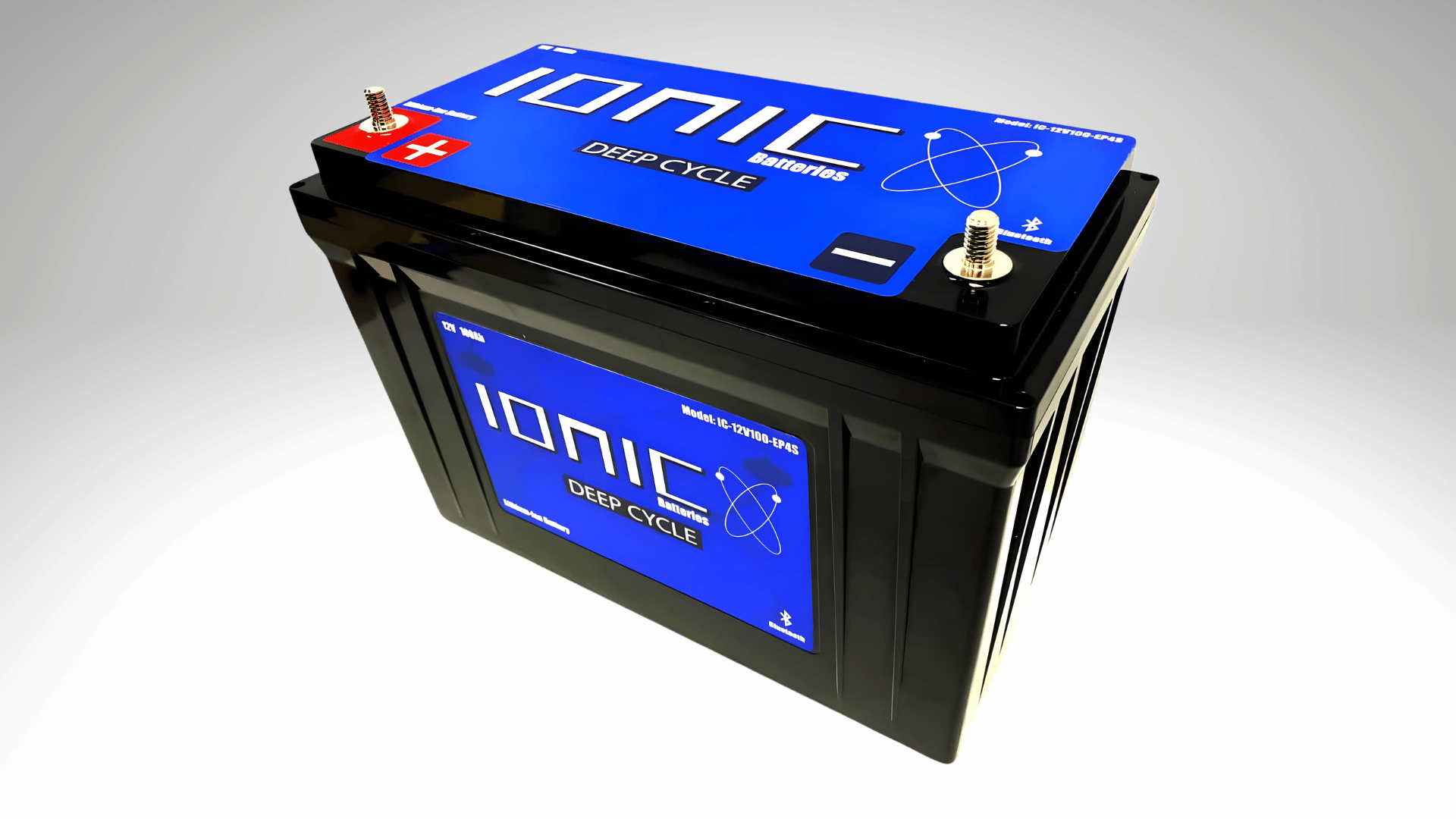Whether you’re powering an off-grid cabin, a solar setup, or your RV, the right energy storage makes all the difference.
A deep-cycle battery isn’t built for short bursts; it’s designed to deliver steady, reliable power over long periods. That endurance makes it essential for systems that need consistent energy when the main source isn’t running.
Today, I’ll help you understand what makes these batteries unique, how they work, and where they’re most useful. You’ll also learn how to choose one that fits your setup perfectly.
What is a Deep Cycle Battery?
A deep-cycle battery is designed to supply power slowly and consistently over time. Unlike regular car batteries that give a quick burst to start an engine, this one releases energy gradually.
It’s used in systems that need power when the main source isn’t active, like solar setups, boats, or RVs. These batteries can be charged and discharged repeatedly without wearing out quickly.
What makes them stand out is their ability to handle deep discharges. That’s why they’re common in renewable energy and off-grid living, where endurance matters most.
How It Works
A deep-cycle battery converts chemical energy into electrical power at a controlled rate. Thick plates and strong separators help it handle frequent charge and discharge cycles without damage.
During use, energy flows from the battery to your devices. When recharged, the flow reverses, restoring power. This repeated exchange gives it the name “deep cycle.”
Charging it correctly and avoiding full discharges keeps it efficient for years.
Types of Deep Cycle Batteries
Not all deep-cycle batteries are made for the same use. Each type offers different benefits depending on your setup, maintenance preference, and budget.
1. Flooded Lead-Acid (FLA)

Flooded lead-acid batteries are the most common and budget-friendly option. They rely on liquid electrolytes and require regular checks to maintain steady water levels.
They work well for solar systems or backup setups where ventilation isn’t an issue. With proper care, they can last for years and deliver steady, dependable energy.
2. Absorbent Glass Mat (AGM)

AGM batteries use a sealed design that traps the electrolyte in glass mats. This prevents leaks and allows them to work safely in tight or enclosed spaces.
They handle vibration and cold weather better than most lead-acid types. Because they’re maintenance-free, they’re popular for RVs, boats, and emergency power systems.
3. Gel Batteries

Gel batteries replace liquid electrolytes with a silica-based gel. This makes them spill-proof and vibration-resistant during movement or travel.
They’re great for off-road vehicles or harsh conditions where stability matters most. However, they don’t charge as quickly in extreme heat, so temperature control helps maintain performance.
4. Lithium-Ion Batteries

Lithium-ion batteries use advanced materials that enable them to store more energy in a lighter design. They recharge faster and deliver consistent power across a wide temperature range.
They’re ideal for solar energy systems or users who want high efficiency with minimal upkeep. While they cost more upfront, their long lifespan makes them the most cost-effective choice over time.
Deep Cycle vs. Regular Car Battery
| Feature | Deep-Cycle Battery | Car Battery |
|---|---|---|
| Purpose | Provides long, steady energy over time | Delivers a quick burst to start an engine |
| Plate Design | Thick plates built for endurance | Thin plates made for short, strong output |
| Discharge Depth | Can safely go up to 80% | Should stay above 90% for the best life |
| Cycle Life | Hundreds to thousands of cycles | Usually, a few hundred cycles |
| Maintenance | Varies by type and setup | Low rarely needs upkeep |
A deep-cycle battery is designed for endurance, not speed. It powers systems that need continuous energy, like solar panels or RV appliances.
A car battery, on the other hand, is built to provide short bursts of power. It recharges quickly but can’t handle repeated deep discharges without damage.
Using each for its proper purpose keeps performance consistent and extends battery life. That’s why understanding this difference matters before you buy or replace one.
Common Uses of Deep Cycle Batteries
These batteries power systems that need long, steady energy instead of quick bursts. They’re common in both mobile and stationary setups where reliability matters.
1. RVs and Campers
In RVs, deep-cycle batteries keep lights, fans, and small appliances running when you’re off the grid. They make camping easier by powering lights and appliances through the night.
Since they recharge from solar panels or generators, you can travel longer without depending on external hookups. That balance of independence and convenience makes them a favorite among travelers.
2. Boats and Marine Systems
Boats use deep-cycle batteries to power motors, radios, and navigation tools. Consistent output keeps navigation and comms dependable over long runs.
They’re designed to handle vibration and moisture, making them safer for marine use. With proper care, they can last for years even in harsh saltwater conditions.
3. Solar Energy Systems
In solar setups, these batteries store energy collected during the day for use at night. This bridges day-night gaps so loads run smoothly after sunset.
They’re ideal for homes or cabins running on renewable energy. Their ability to discharge deeply without damage makes them perfect for storing solar power efficiently.
4. Golf Carts and Electric Vehicles
Golf carts and small electric vehicles rely on these batteries for consistent performance. They provide the slow, steady current needed for smooth operation.
Their durability allows for many charge cycles before replacement. That’s why they’re used in vehicles that need frequent, dependable use over short distances.
5. Backup and Off-Grid Systems
In homes or businesses, these batteries act as backup power during outages. Paired with renewables, they add resilience while keeping essentials online.
Off-grid systems also use them for reliability in remote locations. They recharge easily from renewable sources, making them practical for long-term use.
How to Maintain a Deep Cycle Battery
A few simple habits can help your battery perform more efficiently and last longer. Follow these quick care tips:
- Charge Correctly: Use a smart charger to prevent overcharging. Recharge before it drops below half capacity.
- Store Safely: Keep it in a cool, dry place with good airflow. Avoid extreme heat or freezing temperatures.
- Clean Terminals: Wipe the terminals with a dry cloth to prevent corrosion. Tight connections keep energy flowing smoothly.
- Check Water Levels: For flooded types, add only distilled water when needed. This stops mineral buildup and protects the plates.
- Inspect Regularly: Look for cracked cables or rusted parts. Replace damaged pieces early to prevent power loss.
Regular upkeep doesn’t take long but makes a huge difference in how well your battery performs over time.
Choosing the Right Deep Cycle Battery
| Factor | What to Check | Why It Matters |
|---|---|---|
| Power Needs | Measure your daily energy use and pick a battery with enough capacity to handle the load. | Ensures reliable power without draining the battery too fast. |
| Battery Type | Compare flooded, AGM, gel, and lithium options. | Each type offers different maintenance levels, lifespans, and costs. |
| Space & Weight | Check physical size and total weight before purchase. | Prevents installation issues and supports easier handling. |
| Efficiency | Look for faster charging and better energy retention. | Improves long-term performance and saves charging time. |
| Warranty & Support | Choose reputable brands with strong warranty terms and service access. | Provides protection and long-term reliability. |
Conclusion
Now that you know what is a deep cycle battery, you can see why it’s such a smart choice for long-term, steady power. It’s built to handle repeated use while keeping your systems running smoothly.
I always recommend checking your power needs and choosing the type that fits your setup best. A little attention to maintenance goes a long way in keeping it reliable.
If you’re ready to upgrade or replace your current setup, start by comparing options that match your energy goals and space. It’s the easiest way to get lasting performance.














